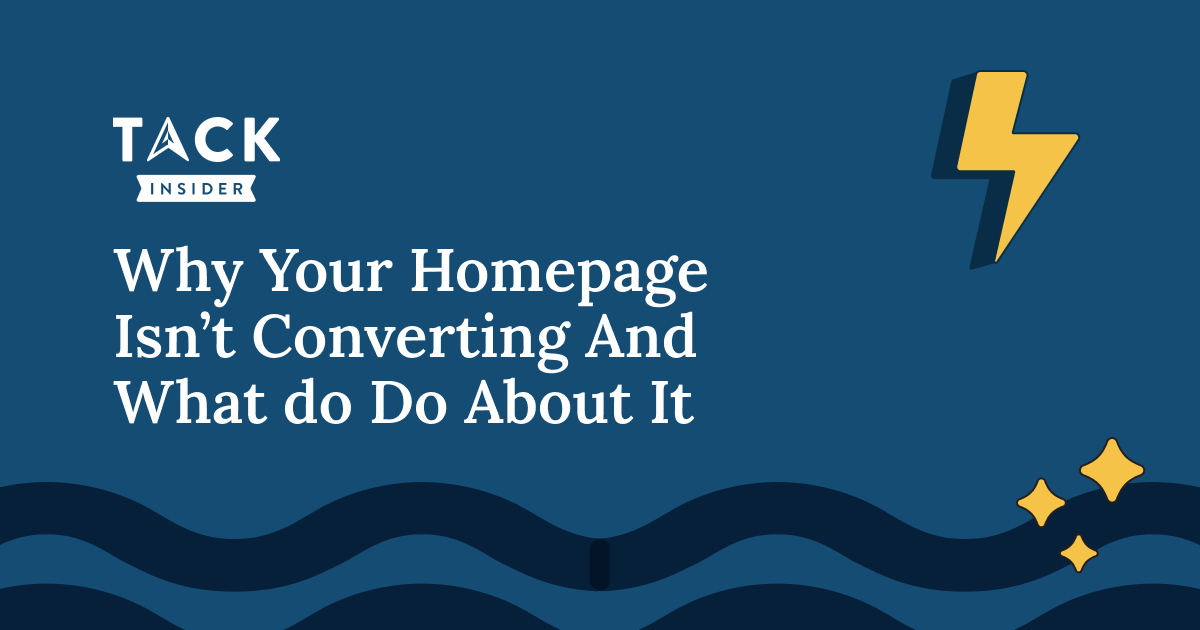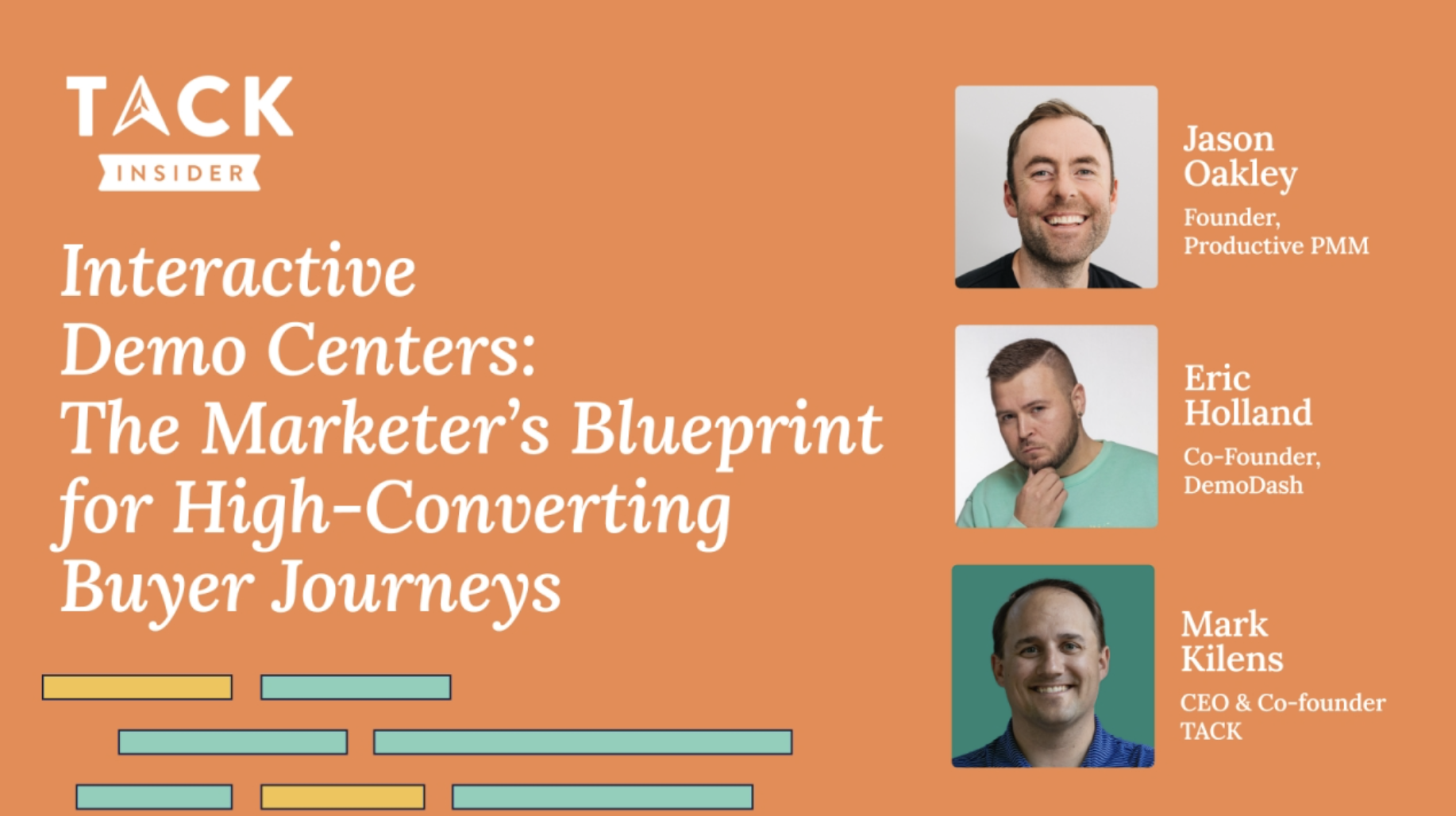Hosted by: Mark Kilens, Co-Founder at TACK
Speakers: Garrett Jestice, Founder Prelude Marketing
Overview
Most B2B websites are built the way TV commercials used to be written—clever before clear. Yet research from Wynter confirms that every software buyer still lands on your homepage before signing a deal. That makes the page your true sales pitch, whether you’re ready or not. Drawing on a recent TACK Insider session with positioning strategist Garrett Jestice, this post distills the conversation into an end-to-end playbook you can use today—no dramatic storytelling, just the principles and the steps.
Check out the full slides of the webinar
Why homepage clarity matters
Your hero section is a decision filter. In ten seconds or less, a new visitor should know:
- What your product is
- Who it’s for
- What tangible value it delivers
- How it’s different from the next tab they’ll open
If any answer is hazy, the prospect bounces.
The four structural layers behind persuasive copy
Before writing headlines, lock in four strategic anchors:
Point of View (POV) – Names the core problem and explains why the old way fails.
Positioning – Choose the narrow market slice you can own in the next 12–24 months.
Messaging – Converts features into benefits and one overarching value proposition.
Copy – Expresses those ideas in everyday, jargon-free language.
Think of each layer as scaffolding for the next; skip one and the page sags.
Two quick frameworks for finding the real pain
High-impact copy begins with precise problem statements.
- Five W’s clarify context: what hurts, who feels it, when/where it strikes, and why it matters.
- The Personification line adds emotion: “I am [persona] trying to [goal] but [barrier], which makes me feel [emotion].”
These tools convert fuzzy complaints into sharp talking points—exactly what you’ll use in your hero and problem blocks.
Positioning = focus + sacrifice
Great brands win by narrowing their arena. A custom-software agency, for instance, grew faster once it stopped chasing “all development work” and owned the niche nobody wanted: maintaining legacy code. Pick the slice you can dominate now, ignore the rest, and your copy will write itself.
Turning features into value propositions
A homepage should read like a before-and-after story, not a parts catalog. Start by mapping the buyer’s current workflow without your solution, attach each pain point to a feature that removes it, then trim the list until you have:
- One clear value proposition
- Three benefits that ladder up to that promise
- Two–three feature proofs under each benefit
When every feature kills a named pain, you no longer need hype to persuade.
Building a page that converts at a glance
Once the strategy is set, structure the page so each block earns the right to show the next:
- Hero – Precise H1, single-sentence subhead, primary CTA, optional trust bar.
- Problem/POV – A short paragraph that proves you understand the buyer’s obstacle.
- Solution – Lead with the value prop, expand with the three benefits and proof features.
- Social proof – Testimonial from the ideal customer profile; relevance beats big logos.
- Final CTA – Pose a question that echoes the visitor’s goal, then offer one action.
What to remember when you rewrite tomorrow
Before you tweak a headline or pick a hero image, run this checklist:
- Clarity beats clever—especially in AI-powered search results and dark-social chats.
- A firm point of view sticks; neutrality disappears.
- Position for today’s winnable niche; you can broaden later.
- Map pains before writing copy; if a feature fixes nothing, cut it.
- Write like a human—if you wouldn’t say it over coffee, rewrite it.




